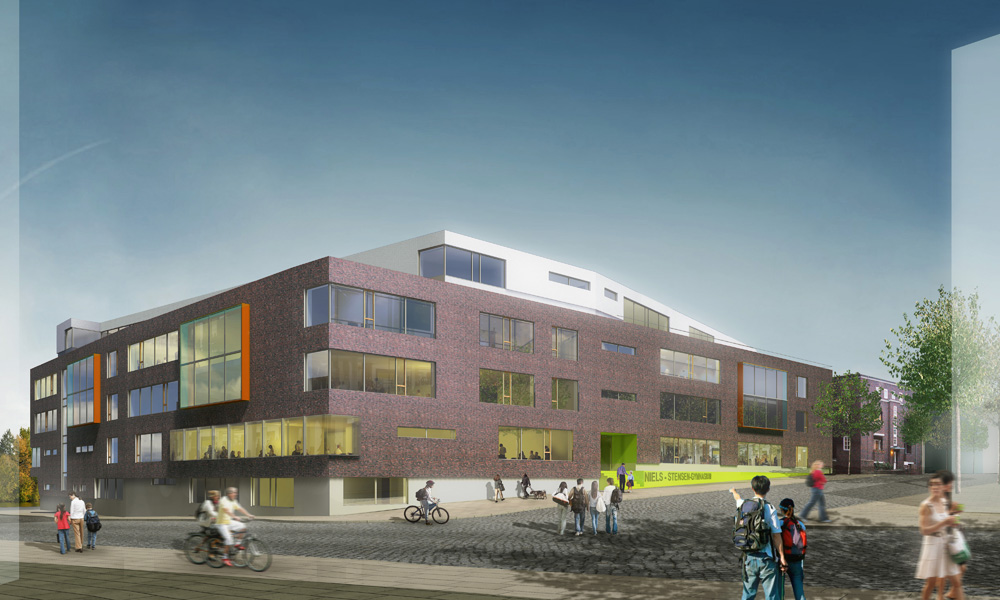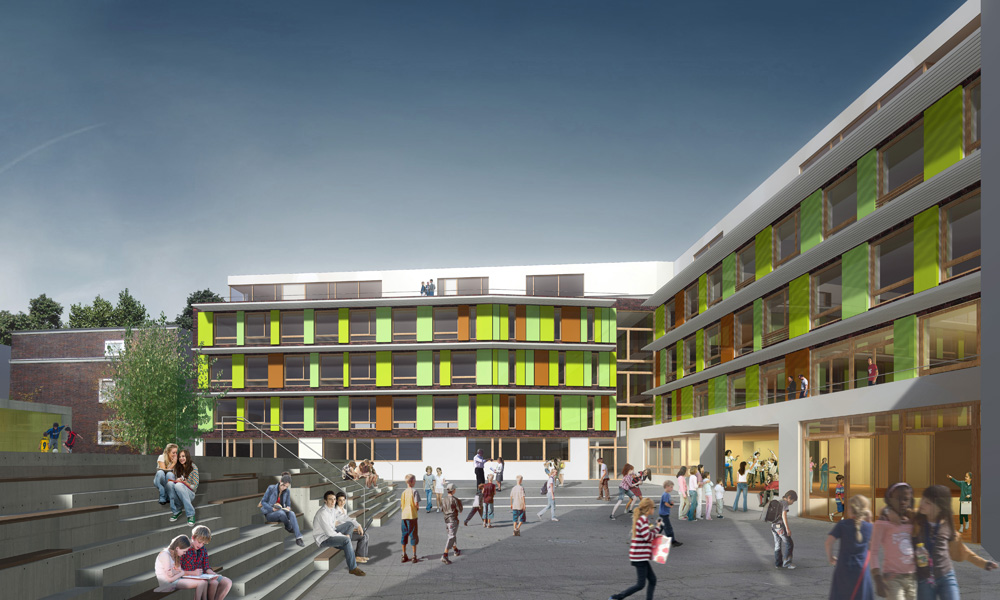BUND Nature House, Hamburg-Eppendorf
A small thatched cottage has been standing in the south-east corner of Kellinghusen Park for many years. A simple, rural, one-storey brick-and-timber construction. Until 1996, it was used by the parks and gardens department as a storage and lumber room. Then, in that year, it was placed at the disposal of the association BUND as a base for its work with children and the environment by the District Assembly of Hamburg-North. The park ensemble together with the thatched cottage stands under a preservation order.
During the night of 23rd September, 2014, the cottage burned down to its foundations. As the building was very popular with the residents of Eppendorf, District North decided to have it rebuilt. With numerous donations from the borough, a small cadre could be laid for a reconstruction of the building, true to its original form.
A kitchen, a common room used for further education and two separate WCs with a vestibule are situated next to the entrance hallway. As the existing areas at the users‘ disposal were not condidered adequate, the roof area was insulated during the reconstruction phase and rendered usable by means of a gallery. Via a newel staircase, access is gained to this loft, which in future will be used as storage space and for occasional office work. The area is lighted by two windows shaped like batwings and orientated on a north-south axis.
The original foundation slab, approximately 61 square metres in size, has been re-employed to carry the oak-timber frame, which is styled as a semi-detached house. Both the truss and the suspended ceiling are of solid building wood ( pine ). This ceiling, carried out as a collar-beam and tenaille type, was fastened to the purlins on one side and rested on the middle wall on the other with four additional posts. The timbers of the outer walls were filled in with red clay brickwork. The interior-wall construction consists of wind-sealing weather strips plus an insulating jacket of mudbrick. This construction was used for the concealed electrical-installation cabling as well as providing locations for flush-mounted plug-sockets and switches.
Like the original, this single-storey timber-framed building has two windows and a door on the south side and three windows facing north. The thatched roof was built as a ventilated, insulated rafter construction with interior mudbrick cladding.
Instead of the previous uninsulated flooring of paving stones on a bed of sand and mortar, an insulated construction with floor heating and smooth screed has been carried out to prevent cold getting to the feet.
As the roofing is of thatch, rainwater drips from the eaves and trickles down into the ground.





